
The Isle of Man Steam Packet Company Limited is the oldest continuously operating passenger shipping company in the world, having been founded in 1830.

SS (RMS) Ellan Vannin was built as an iron paddle steamer in 1860 at Meadowside, Glasgow for the Isle of Man Steam Packet Company. She was originally named Mona's Isle - the second ship in the company's history to be so named. She served for 23 years under that name before being rebuilt, re-engined and renamed in 1883. As Ellan Vannin she served for a further 26 years before being lost in a storm on 3 December 1909 in Liverpool Bay.
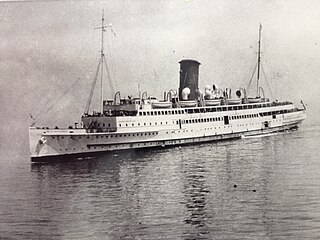
TSS (RMS) Ben-my-Chree (IV) No. 145304 – the fourth vessel in the company's history to be so named – was a passenger ferry operated by the Isle of Man Steam Packet Company between 1927 and 1965.
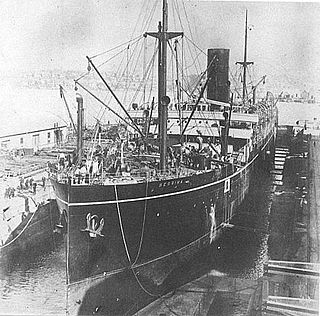
Caird & Company was a Scottish shipbuilding and engineering firm based in Greenock. The company was established in 1828 by John Caird when he received an order to re-engine Clyde paddle-tugs.

TSS Snaefell V - the fifth ship in the Company's history to bear the name - was a passenger vessel operated by the Isle of Man Steam Packet Company from 1948 to 1978. Her purchase cost was £504,448.

TSS Mona’s Isle V, the fifth ship in the line's history to bear the name, was a passenger vessel operated by the Isle of Man Steam Packet Company from 1951 to 1980. She was the last of the company's ships to use low pressure turbines.
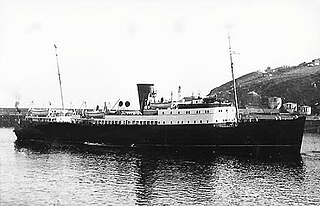
TSS (RMS) Fenella (II) No. 145310 was a pre-Second World War passenger steamer built by Vickers Armstrong at Barrow-in-Furness in 1936, for service with the Isle of Man Steam Packet Company. She was sunk by air attack during the evacuation of Dunkirk in May 1940.

SS (RMS) Fenella (I), No.76303, was an Iron twin-screw steamer operated by the Isle of Man Steam Packet Company, and was the first ship in the company's history to bear the name.
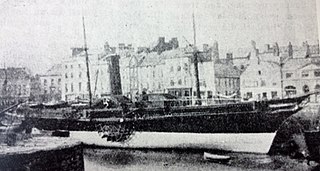
SS (RMS) Tynwald (I), No. 21921, was an iron paddle-steamer which served with the Isle of Man Steam Packet Company, and was the first vessel in the Company to bear the name.
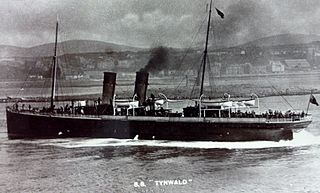
SS (RMS) Tynwald (III), No. 95755, was an iron passenger steamer which served with the Isle of Man Steam Packet Company, and was the third vessel in the Company to bear the name.

SS (RMS) Mona's Isle (I) was the first vessel ordered for service with the Isle of Man Steam Packet Company when it began its operation in 1830. No Official number is recorded for the vessel, as formal registration was not introduced until the Merchant Shipping Act 1854.

SS (RMS) Douglas (II) No. 45470 – the second vessel in the line's history to be so named – was an iron-built paddle steamer operated by the Isle of Man Steam Packet Company.

SS (RMS) Queen of the Isle was a paddle steamer which was constructed by Robert Napier & Co. Glasgow. No Official number is recorded for the vessel, as formal registration was not introduced until the Merchant Shipping Act 1854.

SS (RMS) King Orry (I) No. 21923 - the first vessel in the line's history to be so named - was a wooden paddle-steamer which served with the Isle of Man Steam Packet Company.

SS (RMS) King Orry (II) No. 45479 – the second vessel in the company's history to bear the name – was an iron paddle-steamer operated by the Isle of Man Steam Packet Company.

SS (RMS) Snaefell (I) – the first ship in the Company's history to bear the name – was an iron paddle steamer that served with the Isle of Man Steam Packet Company until she was sold in 1875.
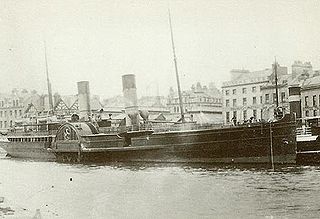
SS (RMS) Snaefell (II) No. 67289 – the second vessel in the line's history to be so named – was an iron paddle steamer which was owned and operated by the Isle of Man Steam Packet Company.

PS (RMS) Prince of Wales No. 93381 was a steel built paddle steamer which was purchased together with her sister PS Queen Victoria, by the Isle of Man Steam Packet Company from the Isle of Man, Liverpool and Manchester Steamship Company in 1888 - referred to as The Manx Line.

PS (RMS) Queen Victoria No. 93379 was a steel built paddle steamer which was purchased together with her sister PS Prince of Wales, by the Isle of Man Steam Packet Company from the Isle of Man, Liverpool and Manchester Steamship Company in 1888 - referred to as The Manx Line.

SS (RMS) Mona's Isle (III), No. 76304, the third ship in the company's history to be so named, was a paddle steamer which served with the Isle of Man Steam Packet Company until she was purchased by The Admiralty in 1915.






















